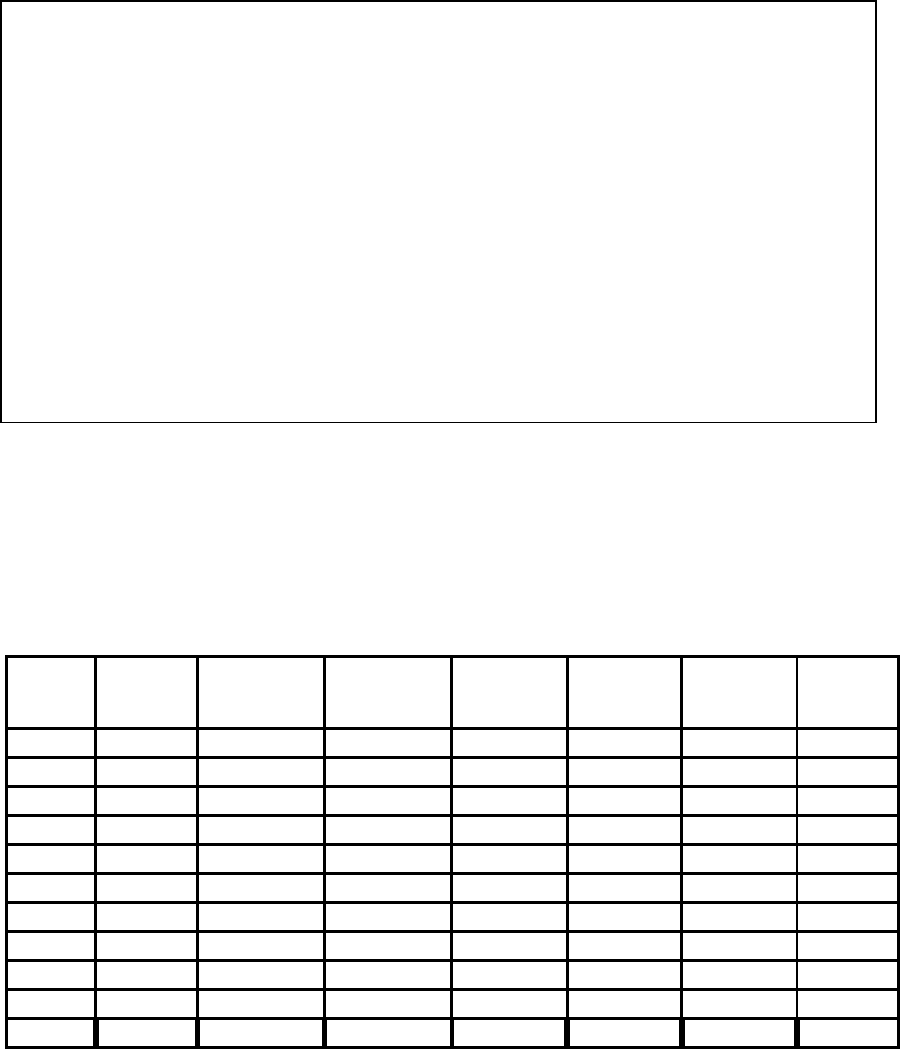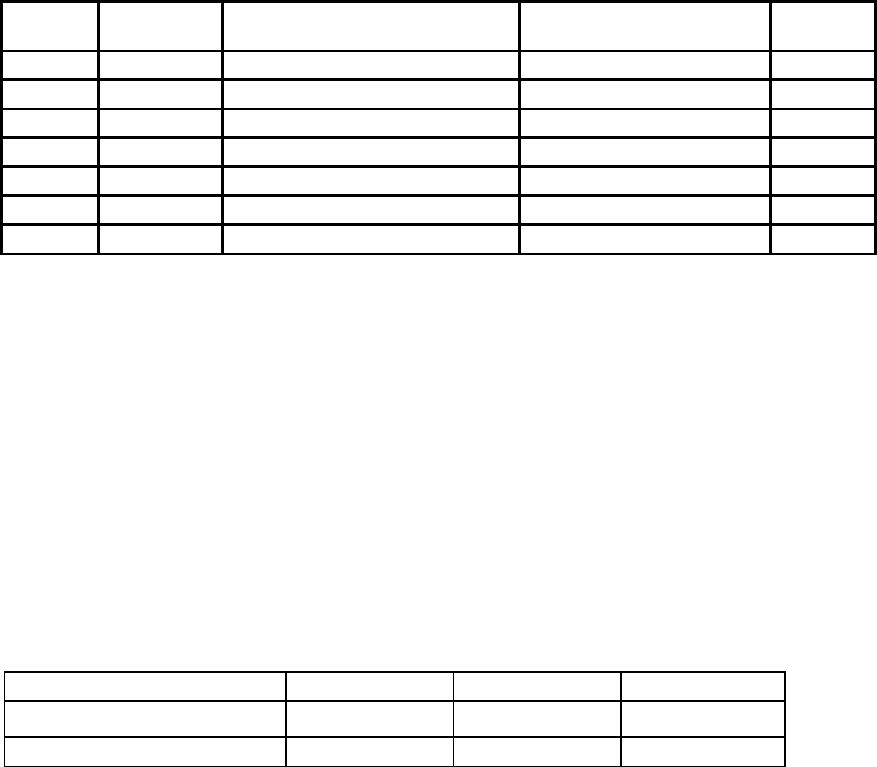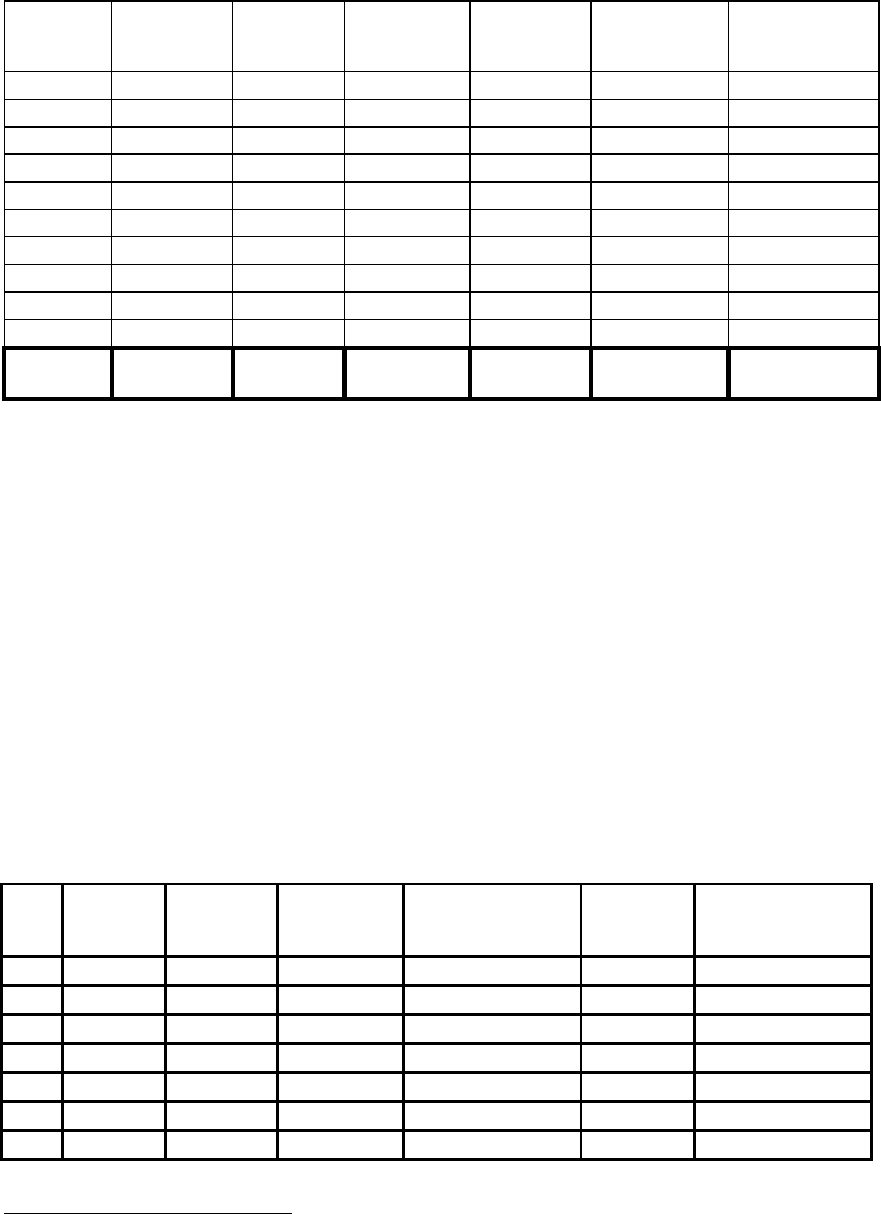Damodaran A. Applied corporate finance
Подождите немного. Документ загружается.


11
11
No of institutional holders
219.4
180
yes
While the option holdings of managers seemed to have had no statistical impact on
whether firms bought back stock or increased dividends, firms buying back stock had
higher book to market ratios than firms increasing dividends, and more institutional
stockholders. The higher book to price ratio can be viewed as an indication that these
firms are more likely to view themselves as under valued. The larger institutional holding
might suggest a greater sensitivity to the tax advantage of stock buybacks.
11.1. ☞: Stock Buybacks and Stock Price Effects
For which of the following types of firms would a stock buyback be most likely to lead to
a drop in the stock price?
a. Companies with a history of poor project choice
b. Companies which borrow money to buy back stock
c. Companies which are perceived to have great investment opportunities
Explain.
A Cash Flow Approach to Analyzing Dividend Policy
Given what firms are returning to their stockholders in the form of dividends or
stock buybacks, how do we decide whether they are returning too much or too little? In
the cash flow approach, we follow four steps. We first measure how much cash is
available to be paid out to stockholders after meeting reinvestment needs and compare
this amount to the amount actually returned to stockholders. We then have to consider
how good existing and new investments in the firm are. Thirdly, based upon the cash
payout and project quality, we consider whether firms should be accumulating more cash
or less. Finally, we look at the relationship between dividend policy and debt policy.
Step 1: Measuring Cash Available to be returned to Stockholders
To estimate how much cash a firm can afford to return to its stockholders, we
begin with the net income –– the accounting measure of the stockholders’ earnings
during the period –– and convert it to a cash flow by subtracting out a firm’s reinvestment
needs. First, any capital expenditures, defined broadly to include acquistions, are
subtracted from the net income, since they represent cash outflows. Depreciation and

12
12
amortization, on the other hand, are added back in because they are non-cash charges.
The difference between capital expenditures and depreciation is referred to as net capital
expenditures and is usually a function of the growth characteristics of the firm. High-
growth firms tend to have high net capital expenditures relative to earnings, whereas low-
growth firms may have low, and sometimes even negative, net capital expenditures.
Second, increases in working capital drain a firm’s cash flows, while decreases in
working capital increase the cash flows available to equity investors. Firms that are
growing fast, in industries with high working capital requirements (retailing, for
instance), typically have large increases in working capital. Since we are interested in the
cash flow effects, we consider only changes in non-cash working capital in this analysis.
Finally, equity investors also have to consider the effect of changes in the levels
of debt on their cash flows. Repaying the principal on existing debt represents a cash
outflow, but the debt repayment may be fully or partially financed by the issue of new
debt, which is a cash inflow. Again, netting the repayment of old debt against the new
debt issues provides a measure of the cash flow effects of changes in debt.
Allowing for the cash flow effects of net capital expenditures, changes in working
capital, and net changes in debt on equity investors, we can define the cash flows left
over after these changes as the free cash flow to equity (FCFE):
Free Cash Flow to Equity (FCFE) = Net Income
- (Capital Expenditures - Depreciation)
- (Change in Non-cash Working Capital)
+ (New Debt Issued - Debt Repayments)
This is the cash flow available to be paid out as dividends.
This calculation can be simplified if we assume that the net capital expenditures
and working capital changes are financed using a fixed mix
5
of debt and equity. If δ is the
proportion of the net capital expenditures and working capital changes that is raised from
debt financing, the effect on cash flows to equity of these items can be represented as
follows:
5
The mix has to be fixed in book value terms. It can be varying in market value terms.

13
13
Equity Cash Flows associated with Capital Expenditure Needs = – (Capital Expenditures
- Depreciation) (1 - δ)
Equity Cash Flows associated with Working Capital Needs = - (Δ Working Capital) (1-δ)
Accordingly, the cash flow available for equity investors after meeting capital
expenditure and working capital needs is:
Free Cash Flow to Equity = Net Income
- (Capital Expenditures - Depreciation) (1 - δ)
- (Δ Working Capital) (1-δ)
Note that the net debt payment item is eliminated, because debt repayments are
financed with new debt issues to keep the debt ratio fixed. It is particularly useful to
assume that a specified proportion of net capital expenditures and working capital needs
will be financed with debt if the target or optimal debt ratio of the firm is used to forecast
the free cash flow to equity that will be available in future periods. Alternatively, in
examining past periods, we can use the firm’s average debt ratio over the period to arrive
at approximate free cash flows to equity.
In Practice: Estimating the FCFE at a Financial Service Firm
The standard definition of free cash flows to equity is straightforward to put into
practice for most manufacturing firms, since the net capital expenditures, non-cash
working capital needs and debt ratio can be estimated from the financial statements. In
contrast, the estimation of free cash flows to equity is difficult for financial service firms,
due to several reasons. First, estimating net capital expenditures and non-cash working
capital for a bank or insurance company is difficult to do, since all of the assets and
liabilites are in the form of financial claims. Second, it is difficult to define short-term
debt for financial service firms, again due to the complexity of their balance sheets.
To estimate the FCFE for a bank, we begin by categorizing the income earned
into three categories - net interest income from taking deposits and lending them out a
higher interest rate, arbitrage income from buying financial claims (at a lower price) and
selling financial claims (of equivalent risk) at a higher price and advisory and fee income
from providing financial advice and services to firms. For each of these sources of
income, we traced the equity investment that would be needed:

14
14
Type of Income Net Investment Needed
Net Interest Income Net Loans - Total Deposits
Arbitrage Income Investments in Financial Assets - Corresponding Financial Liabilities
Advisory Income Training Expenses
(Net Loans = Total Loans - Bad Debt Provisions)
The first two categories of net investment can usually be obtained from the balance sheet,
and changes in these net figures from year to year can be treated as the equivalent of net
capital expenditures. While, in theory, training expenses should be capitalized and treated
as tax-deductible capital expenditures, they are seldom shown in enough detail at most
firms for this to be feasible.
Illustration 11.2: Estimating Free Cash Flows to Equity – Disney, Aracruz and Deutsche
Bank
In Table 11.4, we estimate the free cash flows to equity for Disney from 1994 to
2003, using historical information from their financial statements.
Table 11.4: Estimates of Free Cashflows to Equity for Disney: 1994-2003
Year
Net
Income
Depreciation
Capital
Expenditures
Change in
non-cash
WC
FCFE
(before
debt CF)
Net CF
from Debt
FCFE
(after
Debt CF)
1994
$1,110.40
$1,608.30
$1,026.11
$654.10
$1,038.49
$551.10
$1,589.59
1995
$1,380.10
$1,853.00
$896.50
($270.70)
$2,607.30
$14.20
$2,621.50
1996
$1,214.00
$3,944.00
$13,464.00
$617.00
($8,923.00)
$8,688.00
($235.00)
1997
$1,966.00
$4,958.00
$1,922.00
($174.00)
$5,176.00
($1,641.00)
$3,535.00
1998
$1,850.00
$3,323.00
$2,314.00
$939.00
$1,920.00
$618.00
$2,538.00
1999
$1,300.00
$3,779.00
$2,134.00
($363.00)
$3,308.00
($176.00)
$3,132.00
2000
$920.00
$2,195.00
$2,013.00
($1,184.00)
$2,286.00
($2,118.00)
$168.00
2001
($158.00)
$1,754.00
$1,795.00
$244.00
($443.00)
$77.00
($366.00)
2002
$1,236.00
$1,042.00
$1,086.00
$27.00
$1,165.00
$1,892.00
$3,057.00
2003
$1,267.00
$1,077.00
$1,049.00
($264.00)
$1,559.00
($1,145.00)
$414.00
Average
$1,208.55
$2,553.33
$2,769.96
$22.54
$969.38
$676.03
$1,645.41
The depreciation numbers also include amortization and the capital expenditures include
acquisitions; the acquisition of Capital Cities/ABC is reflected in the large jump in capital
expenditures in 1996 and in depreciation in the years after as goodwill was amortized.
Increases in non-cash working capital, shown as positive numbers, represent a drain on
the cash. In 1994, for example, non-cash working capital increased by $ 654.10 million,
reducing the cash available for stockholders in that year by the same amount. Finally, the

15
15
net cashflow from debt is the cash generated by the issuance of new debt, netted out
against the cash outflow from the repayment of old debt. Again, using 1994 as an
example, Disney issued $ 551.10 million more in new debt than it paid off on old debt,
and this represents a cash inflow in that year.
We have computed two measures of free cashflow to equity, one before the net
debt cashflow and one after. Using 1994 as an illustration, we compute each as follows:
FCFE before net Debt CF = Net Income + Depreciation – Capital Expenditures –
Change in non-cash Working Capital = 1110.40 + 1608.30 – 1026.11 -654.10 = $
1038.49 million
FCFE after net Debt CF = FCFE before net Debt CF + Net Debt Cashflow =
1038.49 + 551.10 = $1589.59 million
As Table 11.4 indicates, Disney had negative free cash flows to equity in 2 of the 10
years, in 1996 because of the Capital Cities acquisition and in 2001 because they reported
a loss. The average annual FCFE before net debt issues over the period was $968 million
and the average net debt issued over the period was $676 million, resulting in an annual
FCFE after net debt issues of $1,645 million.
A similar estimation of FCFE was done for Aracruz from 1998 to 2003 in table
11.5, again using historical information:
Table 11.5: FCFE for Aracruz in US$ from 1998 to 2003
Year
Net
Income
Depreciation
Capital
Expenditures
Change in
non-cash
WC
FCFE
(before net
Debt CF)
Net Debt
Cashflow
FCFE
(after net
Debt CF)
1998
$3.45
$152.80
$88.31
$76.06
($8.11)
$174.27
$166.16
1999
$90.77
$158.83
$56.47
$2.18
$190.95
($604.48)
($413.53)
2000
$201.71
$167.96
$219.37
$12.30
$138.00
($292.07)
($154.07)
2001
$18.11
$162.57
$421.49
($56.76)
($184.06)
$318.24
$134.19
2002
$111.91
$171.50
$260.70
($5.63)
$28.34
$36.35
$64.69
2003
$148.09
$162.57
$421.49
($7.47)
($103.37)
$531.20
$427.83
Average
$95.67
$162.70
$244.64
$3.45
$10.29
$27.25
$37.54
Between 1998 and 2003, Aracruz had big swings in net income and corresponding
swings in FCFE, with FCFE being negative in 3 of the 6 years. The average annual FCFE
before net debt cashflows was approximately 10 million dollars. The cashflows from debt
add to the volatility, since Aracruz paid off large amounts of debt in 1999 and 2000 and

16
16
raised large amounts of debt in 1998, 2001 and 2003. The average annual FCFE after net
debt cashflows changes relatively little to 37.54 million dollars.
We can compute Aracruz’s FCFE each year, using the approximation that we
described in the last section. To do this, we first have to compute the net debt cashflows
as percent of reinvestment needs over this period. Using the average values for debt
cashflows, capital expenditures, depreciation and changes in non-cash working capital:
Average Debt Ratio = Net Debt Cashflow/ (Capital expenditures – Depreciation +
Change in non-cash Working capital) = 27.25/(244.64-162.70+3.45) = 31.92%
The FCFE each year can then be estimated using the average debt ratio, instead of the
actual net debt cashflows. Table 11.6 contains the estimates of FCFE each year using this
approach for Aracruz:
Table 11.6: Approximate FCFE for Aracruz from 1998 to 2003
Year
Net Income
(Capital Expenditures -
Depreciation)*(1-DR)
Change in non-cash WC (1-
DR)
FCFE
1998
$3.45
-$43.91
$51.78
-$4.42
1999
$90.77
-$69.69
$1.48
$158.98
2000
$201.71
$35.00
$8.38
$158.34
2001
$18.11
$176.28
-$38.64
-$119.53
2002
$111.91
$60.73
-$3.83
$55.02
2003
$148.09
$176.28
-$5.09
-$23.11
Average
$95.67
$55.78
$2.35
$37.54
Note that the average FCFE between 1998 and 2003 remains the same at 37.54 million
dollars a year when we use the approximation. The FCFE in each year is different,
though, from the estimates in table 11.5, because we are smoothing out the effects of the
cashflows from debt.
To estimate the FCFE for Deutsche Bank, we used the categories developed
earlier for banks - net interest income, arbitrage income and advisory and fee income
from providing financial advice and services to firms. To estimate the net investment
made in 2003 for each source of income, and ignoring training expenses, we used the
balance sheet numbers for 2002 and 2003. Table 11.7 reports these numbers.
Table 11.7: Deutsche Bank: 2002 and 2003 Financials
2002
2003
Change
Interbank Assets
€ 25,691.00
€ 14,649.00
-€ 11,042.00
Net Loans
€ 167,303.00
€ 144,946.00
-€ 22,357.00

17
17
Security Purchases/Resell
€ 155,258.00
€ 185,215.00
€ 29,957.00
ST Investments
€ 318,681.00
€ 370,002.00
€ 51,321.00
LT Investments
€ 4,729.00
€ 2,569.00
-€ 2,160.00
Net Fixed Assets
€ 8,883.00
€ 5,786.00
-€ 3,097.00
Other Assets
€ 68,732.00
€ 73,751.00
€ 5,019.00
Total Non-Cash Assets
€ 749,277.00
€ 796,918.00
€ 47,641.00
Total Deposits
€ 327,625.00
€ 306,154.00
-€ 21,471.00
ST Borrowings
€ 125,842.00
€ 155,002.00
€ 29,160.00
LT Borrowing
€ 92,388.00
€ 82,018.00
-€ 10,370.00
ST Liabilities
€ 172,379.00
€ 222,838.00
€ 50,459.00
LT Liabilities
€ 10,130.00
€ 9,400.00
-€ 730.00
Liabilities
€ 728,364.00
€ 775,412.00
€ 47,048.00
We then categorized these changes into the “interest income” investments, “arbitrage
income” investments and “other” investments, considering interbank investments as
interest income investments.
Interest Income Investments = (Net Loans + Interbank Investments - Deposits)
2003
- (Net Loans + Interbank Investments - Deposits)
2002
Arbitrage Investments = (Short Term and Long Term Investments + Security
Purchases - ST Borrowings - LT Borrowings - ST Liabilities - LT Liabilities)
2003
- (Short Term and Long Term Investments - ST Borrowings - LT Borrowings -
ST Liabilities - LT Liabilities)
2002
Other Investments = (Net Fixed Assets + Other Assets)
2003
- (Net Fixed Assets +
Other Assets)
2002
With these definitions, and based upon Deutsche’s Bank’s net income of 1,365 million
Euro in 2003, we estimated the FCFE :
Net Income = 1365
- Interest Income Investments -(-€ 11,928.00)
- Arbitrage Investments - € 10,599.00
- Other Investments - € 1,922.00
FCFE = € 772.00
This analysis would suggest that Deutsche Bank had 772 million Euros available to be
returned to stockholders in 2003.
11.2. ☞: Defining Free Cash Flows to Equity

18
18
The reason that the net income is not the amount that a company can afford to pay out in
dividends is because
a. Earnings are not cash flows
b. Some of the earnings have to be reinvested back in the firm to create growth
c. There may be cash inflows or outflows associated with the use of debt
d. All of the above
Explain.
Measuring the Payout Ratio
The conventional measure of dividend policy –– the dividend payout ratio ––
gives us the value of dividends as a proportion of earnings. In contrast, our approach
measures the total cash returned to stockholders as a proportion of the free cash flow to
equity:
Dividend Payout Ratio = Dividends / Earnings
Cash to Stockholders to FCFE Ratio = (Dividends + Equity Repurchases) / FCFE
The ratio of cash returned to stockholders to FCFE shows how much of the cash available
to be paid out to stockholders is actually returned to them in the form of dividends and
stock buybacks. If this ratio, over time, is equal or close to 100%, the firm is paying out
all that it can to its stockholders. If it is significantly less than 100%, the firm is paying
out less than it can afford to and is using the difference to increase its cash balance or to
invest in marketable securities. If it is significantly over 100%, the firm is paying out
more than it can afford and is either drawing on an existing cash balance or issuing new
securities (stocks or bonds).
Illustration 11.3: Comparing Dividend Payout Ratios to FCFE Payout Ratios: Disney
and Aracruz
In the following analysis, we compare the dividend payout ratios to the cash to
stockholders as a percent of FCFE for Disney and Aracruz. Table 11.8 shows both
numbers for Disney from 1994 to 2003.
Table 11.8: Disney: Dividends as Percentage of Earnings and Cash Returned as
Percentage of FCFE

19
19
Year
Net Income
Dividends
Payout
Ratio
FCFE
Cash returned
to
Stockholders
Cash
Returned/FCFE
1994
$1,110.40
$153.20
13.80%
$1,589.59
$723.90
45.54%
1995
$1,380.10
$180.00
13.04%
$2,621.50
$528.70
20.17%
1996
$1,214.00
$271.00
22.32%
($235.00)
$733.00
NA
1997
$1,966.00
$342.00
17.40%
$3,535.00
$975.00
27.58%
1998
$1,850.00
$412.00
22.27%
$2,538.00
$442.00
17.42%
1999
$1,300.00
$0.00
0.00%
$3,132.00
$19.00
0.61%
2000
$920.00
$434.00
47.17%
$168.00
$600.00
357.14%
2001
($158.00)
$438.00
NA
($366.00)
$1,511.00
NA
2002
$1,236.00
$428.00
34.63%
$3,057.00
$428.00
14.00%
2003
$1,267.00
$429.00
33.86%
$414.00
$429.00
103.62%
1994-
2003
$12,085.50
$3,087.20
25.54%
$16,454.09
$6,389.60
38.83%
As you can see, Disney paid out 25.54% of its aggregate earnings as dividends over this
period.
6
Over the same period, it returned 38.83% of its FCFE to its stockholders in the
form of dividends and stock buybacks. Though the payout ratio gives us little information
about the company, the cash returned as a percent of FCFE suggests that Disney
accumulated cash during this period. Even if we ignore the cashflows generated by debt
in estimating FCFE, Disney returned only 65.91% of its FCFE to its stockholders in the
form of dividends and stock buybacks.
Table 11.9 shows dividend payout ratios and cash returned to stockholders as a
percent of FCFE for Aracruz from 1998 to 2003.
Table 11.9: Aracruz – Dividends as Percentage of Earnings and Cash Returned as
Percent of FCFE
Year
Net Income
Dividends
Payout Ratio
FCFE
Cash
returned to
Stockholders
Cash
Returned/FCFE
1998
$3.45
$24.39
707.51%
$166.16
$50.79
30.57%
1999
$90.77
$18.20
20.05%
($413.53)
$18.20
NA
2000
$201.71
$57.96
28.74%
($154.07)
$80.68
NA
2001
$18.11
$63.17
348.87%
$134.19
$63.17
47.08%
2002
$111.91
$73.80
65.94%
$64.69
$75.98
117.45%
2003
$148.09
$109.31
73.81%
$427.83
$112.31
26.25%
1998-
$574.04
$346.83
60.42%
$225.27
$401.12
178.07%
6
To compute the payout ratio over the entire period, we first aggregated earnings and dividends over the
entire period and then divided the aggregate dividends by the aggregate earnings. This avoids the problems
created by averaging ratios where outliers (very high ratios) are common.

20
20
2003
As with Disney, the payout ratio and the cash returned as a percent of FCFE tell you
different stories. While Aracruz paid out 60.42% of its aggregate earnings over the period
as dividends, the total cash returned as a percent of aggregate FCFE was in excess of
100%. Some of the dividends were clearly funded using cash accumulated at the start of
the period.
dividends.xls: This spreadsheet allows you to estimate the free cash flow to equity
and the cash returned to stockholders for a period of up to 10 years.
divfcfe.xls: There is a dataset on the web that summarizes dividends, cash
returned to stockholders and free cash flows to equity, by sector, in the United States.
Why Firms may pay out less than is available
For several reasons, many firms pay out less to stockholders, in the form of
dividends and stock buybacks, than they have available in free cash flows to equity. The
reasons vary from firm to firm and we list some below –
• The managers of a firm may gain by retaining cash rather than paying it out as a
dividend. The desire for empire building may make increasing the size of the firm an
objective on its own. Or, management may feel the need to build up a cash cushion to
tide over periods when earnings may dip; in such periods, the cash cushion may
reduce or obscure the earnings drop and may allow managers to remain in control.
• The firm may be unsure about its future financing needs and may choose to retain
some cash to take on unexpected investments or meet unanticipated needs.
• The firm may have volatile earnings and may retain cash to help smooth out
dividends over time.
• Bondholders may impose restrictions on cash payments to stockholders, which may
prevent the firm from returning available cash flows to its stockholders.
11.3. ☞: What happens to the FCFE that are not paid out?
